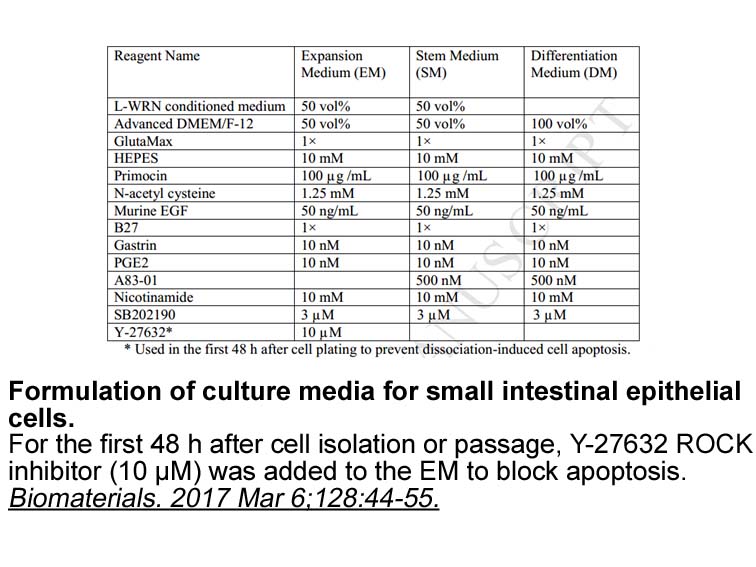Archives
XL413 hydrochloride In fact serotonin is a major modulator
In fact, serotonin is a major modulator of dopaminergic (DA) neuronal activity through the 5-HT2C receptor. Studies have shown that the selective 5-HT2C receptor agonist Ro60-0175 blocks the burst-firing of mesolimbic DA neurons, which project from the ventral tegmental area (VTA) to the nucleus accumbens (NAc) and prefrontal XL413 hydrochloride (PFC) [9,10]. These findings indicate that 5-HT2C receptors exert a tonic inhibition on mesocorticolimbic DA [11]. To correlate these electrophysiological effects to behavior, Fletcher et al. showed that microinjections of Ro60-0175 directly into the VTA reduced cocaine-induced locomotor activity and cocaine self-administration [12].
Furthermore, 5-HT2C receptors agonists have also been implicated in food-reinforced behavior, modulating both fixed and progressive ratio schedule of reinforcement [13], suggesting that they control both homeostatic and hedonic aspects of feeding behavior [14]. This outcome may result from signaling in the midbrain DA system [15]. This reward-relevant circuitry is essenti al for goal-driven, motivated behaviors such as feeding [16].
Therefore, 5-HT2C receptors expressed in the VTA may contribute to modulating feeding behavior in addition to 5-HT2C receptors present in the hypothalamus. Altogether, these findings suggest that 5-HT2C receptor agonists, such as lorcaserin, are likely to have the property to affect both consummatory and appetitive aspects of feeding [7,14]. Given the effects of 5-HT2C receptor agonists in substance abuse models and on obesity [17], a major objective of this study is to investigate whether addiction and food intake could be a possible target for 5-HT2C receptor agonists. Our aim was therefore to investigate the functional role of 5-HT2C receptors located in the VTA and in the ARC, in the control of food intake and amphetamine-induced hyperlocomotion, using the selective 5-HT2C receptor agonist AR231630.
al for goal-driven, motivated behaviors such as feeding [16].
Therefore, 5-HT2C receptors expressed in the VTA may contribute to modulating feeding behavior in addition to 5-HT2C receptors present in the hypothalamus. Altogether, these findings suggest that 5-HT2C receptor agonists, such as lorcaserin, are likely to have the property to affect both consummatory and appetitive aspects of feeding [7,14]. Given the effects of 5-HT2C receptor agonists in substance abuse models and on obesity [17], a major objective of this study is to investigate whether addiction and food intake could be a possible target for 5-HT2C receptor agonists. Our aim was therefore to investigate the functional role of 5-HT2C receptors located in the VTA and in the ARC, in the control of food intake and amphetamine-induced hyperlocomotion, using the selective 5-HT2C receptor agonist AR231630.
Material and methods
Results
Discussion
Previous studies reported that systemic injection of 5-HT2C agonists attenuated a number of behavioral effects, including locomotor activation and feeding [10,12]. In this study, we investigated the role of direct stimulation of the VTA and ARC using a selective 5-HT2C receptor agonist, AR231630, on both amphetamine-induced hyperlocomotion and food intake in rats.
We found that ambulation responses induced by subcutaneous amphetamine injections are dramatically decreased when 10 μg AR231630 is infused into the VTA. Similarly, at this dose, AR231630 slightly reduces basal activity in saline treated animals. Likewise, Fletcher et al. also showed a decreased activity in cocaine-treated rats that were infused with the moderately selective 5-HT2C receptor agonist Ro60-0175 into the VTA [12]. Importantly, a systemic administration of the 5-HT2C receptor antagonist SB242084 reversed the effects of Ro60-0175 on cocaine self-administration [12]. In addition, when we misplaced the cannula, AR231630 fails to elicit hypolocomotion responses, confirming the anatomical specificity of the VTA for the effects of AR231630. In contrast, injection of AR231630 into the ARC has no impact on neither basal nor amphetamine-induced activity. Overall, our data show that selective activation of 5-HT2C receptors in the VTA, but not in the ARC, attenuates basal and amphetamine-stimulated activity.
Psychostimulant drugs such as amphetamine or cocaine exert their rewarding and reinforcing effects by elevating extracellular DA and prolonging DA receptor signaling in the NAc [22]. Importantly, 5-HT2C receptors are expressed on GABAergic neurons originating from the VTA. These neurons exert a tonic inhibition over dopaminergic neurons by blocking DA release in the NAc [11]. Therefore, it is reasonable to suggest that AR231630 counteracts amphetamine effects by inhibiting amphetamine-induced DA release in the NAc.
Our data also show that local infusion of AR231630 into the VTA, but not into the ARC, attenuates responding for food in fasted animals. Moreover, direct blockade of 5-HT2C receptors in the VTA using the selective antagonist SB242084 partially prevents AR231630-induced hypophagia. The dose of SB242084 we injected into the VTA is relatively high (5 μg) as compared to a previous studies (0.5 μg) showing a complete reversion of Ro-60-0175-induced inhibition of accumbal DA outflow [23]. This make unlikely that the partial reversal we observed is due to an incomplete effects of SB242084. So, our data confirm the importance of the VTA in food consumption but also indicate that AR231630 may act at additional brain sites than the VTA.